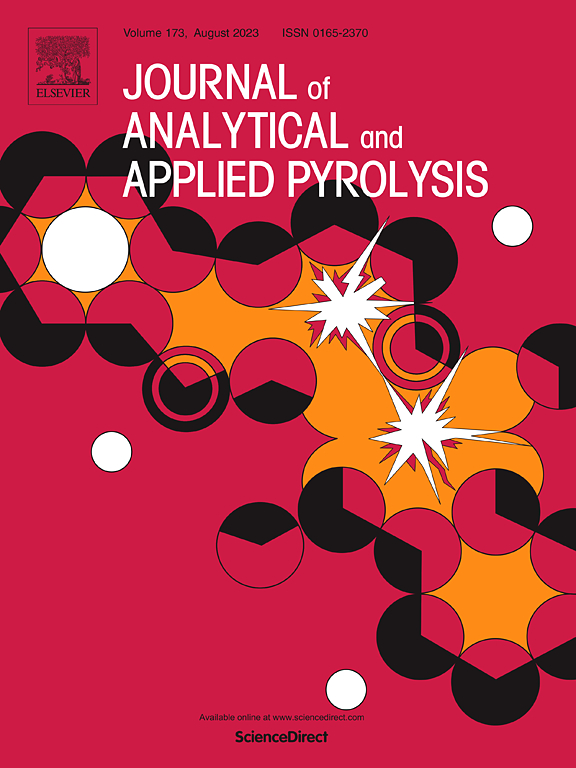基于多平行补偿-简化分布活化能模型(CS-DAEM)的钾辅助木质纤维素热解过程表征
IF 5.8
2区 化学
Q1 CHEMISTRY, ANALYTICAL
引用次数: 0
摘要
钾辅助生物质热解是一种高效的产品多产和升级。本研究采用改进的Friedman-based master plot (MF-MP)方法结合多重平行补偿-简化分布活化能模型(CS-DAEM)对过饱和钾(K2CO3)辅助木质纤维素热解过程进行动力学建模。研究了K2CO3用量对木质纤维素热解过程的影响。MF-MP结果表明,k2co3辅助下纤维素、木聚糖和木质素的热解过程均服从Avrami-Erofeev (Am)成核机制,其中钾稍微降低了活化能。典型木质纤维素(竹)的钾辅助热解过程也遵循Am机理,该过程的3G-Am-CS-DAEM建模达到R2 >; 0.999。通过固定指数前因子,简化了补偿效果。模拟结果表明,随着钾用量从0.01 mmol/g增加到10 mmol/g,活化能降低。该研究为表征钾辅助生物质热解过程提供了一种有效的动力学方法。本文章由计算机程序翻译,如有差异,请以英文原文为准。
Characterizing potassium-assisted lignocellulose pyrolysis process based on the multi-parallel compensation-simplified distributed activated energy model (CS-DAEM)
Potassium-assisted biomass pyrolysis is highly efficient for product poly-generation and upgrading. In this study, kinetics modeling of over-saturated potassium (K2CO3)-assisted lignocellulose pyrolysis process was carried out by using the modified Friedman-based master plot (MF-MP) method combined with multiple-parallel compensation-simplified distributed activation energy model (CS-DAEM). The effects of K2CO3 dosage on the lignocellulose pyrolysis process were also studied. MF-MP results show that all the K2CO3-assisted pyrolysis processes of cellulose, xylan, and lignin obey the Avrami-Erofeev (Am) nucleation mechanism, where potassium slightly decreases the activation energies. The potassium-assisted pyrolysis process of typical lignocellulose (bamboo) also obeys the Am mechanism, and 3G-Am-CS-DAEM modeling of the processes achieves R2 > 0.999. By fixing the pre-exponential factor, the compensation effect was simplified. Based on modeling results, the activation energy decreases as potassium dosage increases from 0.01 mmol/g to 10 mmol/g. This study provides an effective kinetics approach to characterize the potassium-assisted biomass pyrolysis process.
求助全文
通过发布文献求助,成功后即可免费获取论文全文。
去求助
来源期刊
CiteScore
9.10
自引率
11.70%
发文量
340
审稿时长
44 days
期刊介绍:
The Journal of Analytical and Applied Pyrolysis (JAAP) is devoted to the publication of papers dealing with innovative applications of pyrolysis processes, the characterization of products related to pyrolysis reactions, and investigations of reaction mechanism. To be considered by JAAP, a manuscript should present significant progress in these topics. The novelty must be satisfactorily argued in the cover letter. A manuscript with a cover letter to the editor not addressing the novelty is likely to be rejected without review.

 求助内容:
求助内容: 应助结果提醒方式:
应助结果提醒方式:


